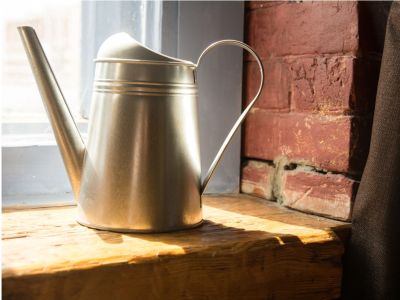Here are a few of our favorite indoor houseplant tools.
Tools For Indoor Plants: Essential Houseplant Tools
When it comes to houseplant gardening tools, a small hand trowel is definitely at the top of the list. A trowel is handy for digging, and for moving small amounts of potting mix from one place to another. A scoop is much like a hand trowel, but the larger size allows you to scoop more material. If you have large plants, you’ll find it indispensable for moving potting mix from the bag to the container. A watering can may seem like a no-brainer, but a good one can make the job easier and more efficient. Ideally, look for a sturdy, lightweight watering can with a long, narrow spout. Avoid large watering cans with sprinkler spouts, which aren’t practical for indoor growing. Gardening gloves aren’t something most people use every day, but a good pair protects your hands when you’re doing a lot of repotting or trimming. Lightweight gloves are generally adequate for indoor plants. A soil knife, also known as a Japanese hori hori knife, is among the most useful houseplant care tools. The knife, which has a strong blade with one serrated edge, is ideal for loosening roots, or for trimming a long, thick, or matted root system. Pruning scissors are easy to maneuver into narrow spots for fine trimming and shaping. If you grow African violets or other flowering plants, you’ll find pruning scissors useful for deadheading spent blooms. Hand pruners with short blades are handy for trimming branches and thicker stems, and are easier to handle than pruning scissors. If you do a lot of trimming, look for pruners with rust-resistant blades and a comfortable, ergonomic handle.
Handy Non-essential Houseplant Tools
The following tools aren’t absolutely necessary, but they help when growing gets a little tricky. A soil probe makes watering indoor plants easier by letting you know when a plant is thirsty. The probe eliminates worry about watering too much or too little and helps to prevent deadly root rot. Most houseplants are native to the tropics, and a mister with a fine spray is handy for increasing humidity. Mist is also useful for removing fine dust that can clog pores and block sunlight. A light meter will help you determine how much light a spot receives, and how the light level changes depending on the time of day. If your home is dry, especially during the winter months, a cool mist humidifier will keep plants (and people) healthier. Newer humidifiers are handy houseplant care tools that automatically shut off when the tank is empty.
